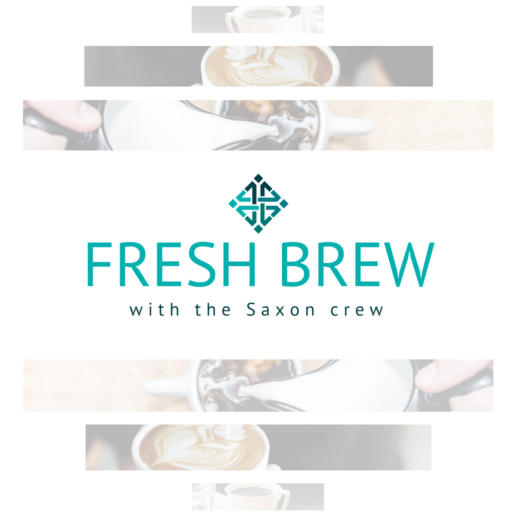3 ways to support workplace well-being during COVID-19
The coronavirus has created many struggles for employees to deal with, and some of the struggles will continue even after measures become lifted. Read this blog post to learn more.
Personal and professional worlds are colliding in ways that have never been seen before, leading employees and employers to navigate new challenges in uncharted waters. As employees continue to struggle with balancing work and personal obligations at home, they are dealing with emotional, physical and financial consequences from the pandemic. Some of these struggles will remain even after social distancing measures are lifted and the economy stabilizes, and they could have a lasting impact on people’s overall wellness.
While many companies are rightfully focused on the bottom line and maintaining business operations throughout the pandemic, it is equally important that they take steps to ensure their employees are supported throughout this tumultuous time. Employee well-being is directly tied to business health, which is why it is so important for organizations to optimize their benefits and deliver the right health and wellness offerings for their workers.
Reassess employee benefit programs
The pandemic is raising awareness that total wellbeing, not just physical health, is a key component to success for businesses and the economy. Employees that are facing at home pressures or feeling financially insecure may be less productive or distracted during the workday, which can impact company success. COVID-19 has hit companies hard. Many are looking for places to trim costs, but benefits and wellbeing programs are not an area they can afford to cut.
Diabetes, depression, mental health and financial stress are on the rise with the majority of employees dealing with unprecedented challenges like childcare, caring for family members who are sick or otherwise impacted by COVID-19 and general anxiety about their future. Cutting benefits programs now may save a few thousand dollars today only to spend tens of thousands of dollars on healthcare costs tomorrow.
Employers who understand the value of employee benefits programs will fare much better than those that guess which programs will be effective. This is an ideal time for businesses to re-assess their current well-being offerings to ensure the programs they are investing in align with the needs of their workforce. It’s also essential that employers make sure employees are aware of the wellness offerings available to them and how to use them. Therefore, it’s important for businesses to increase their communications to employees around wellbeing programs that can help provide physical, mental and emotional support through the pandemic and beyond.
Evaluate current and future employee needs
Not all people are the same, which is why one-size-fits-all programs fail. A successful well-being program should be personalized to best meet employees’ current and future needs. This can be difficult, especially when considering environmental and lifestyle factors, but with the right partner it can be done effectively. Many large employers are working with a partner that leverages social determinants of health data such as household composition, purchasing habits, education and income level and more, to identify individual employee needs.
Employers should also evaluate new types of resources to accommodate the “new normal”. Case in point: we have seen double digit increase in engagement with financial wellbeing and EAP resources. Telehealth and remote condition management programs are on the rise as well as stress management and resilience programs. For example, “Linda” has diabetes, so she needs to know the COVID-19 risks associated with her condition. She may also need extra support to ensure she is keeping up with her healthy eating and exercise regimen during quarantine. Connecting her with a remote diabetes program like Livongo or Virta Health can help Linda feel valued and stay on track. Or, “Tom” has been having severe back pain and his doctor recommends he have surgery to correct a spine-related issue. But not all health systems are offering elective surgeries right now, so he is better off with a telehealth pain management program like Telespine or Hinge Health, Physera and Simple Therapy.
This information allows employers to personalize the health and wellness plans they offer to employees and provide them with the right tools to make their healthcare journeys easier as they navigate this new way of life. Employers will also see the benefits in healthier, happier employers, increased productivity and potentially lower long-term healthcare costs.
Have a solid strategy for returning to work
COVID-19 return to work programs will require an increase in spending for heightened safety measures, such as enhanced cleaning and disinfection practices, employee daily temperature checks (which are now required by some states) and developing and implementing policies and procedures that address preventing, monitoring for and responding to an emergence or resurgence of COVID-19 in the workplace.
As businesses begin reopening workspaces, it is critical for leaders to have a solid employee engagement plan in place to keep workers safe. Be sure to clearly and effectively communicate new safety protocols to employees, so they can feel safe going to work as offices reopen. Invite employees to discuss any concerns they may have in an open forum or via a survey and involve them in problem-solving. Listen to their needs both personally and professionally as our lives will be complicated for months, and possibly years to come. It sounds cliché to say that people are companies most valuable assets. However, it could not be more true right now. It’s time for businesses to make employees’ wellbeing a priority and step up to the challenge of evolving their programming to meet current and future needs. Both the business and its employees will benefit.
SOURCE: Hinkle, C. (19 August 2020) "3 ways to support workplace well-being during COVID-19" (Web Blog Post). Retrieved from employeebenefitadviser.com/opinion/3-ways-to-support-workplace-well-being-during-covid-19
Benefits Consideration for Onboarding Furloughed and Laid Off Employees
As the COVID-19 pandemic continues to create obstacles for the workplace, many professionals are still having to continue with their day-to-day work lives which include having hard discussions with furloughed and laid-off employees. Read this blog post to learn helpful tips on re-enrolling employees into their benefits.
COVID-19 continues to throw us curveballs. While some states that were continuing on their path to recovery are having to backtrack, others have managed to temporarily halt the progression of COVID-19 and are proceeding as planned.
Amidst all this uncertainty, one thing is certain: human resource professionals continue to face overwhelming obstacles. Below, we outline issues that human resource professionals are likely to face as they onboard furloughed and laid-off employees.
Onboarding Furloughed Employees
HEALTH AND WELFARE PLANS
For employees enrolled in one or more employer sponsored health and welfare plans and receiving coverage during the furlough period:
- Payroll deductions for required employee contributions for the plan generally resume upon return from furlough, subject to any changes in employment status that may affect eligibility.
- To the extent repayment of employee contributions advanced during the furlough period is required, consider how to collect the employee contributions (e.g., through payroll deduction or otherwise), keeping in mind state law requirements related to payroll deductions.
- Consider the extent to which election changes may be made upon return from furlough.
For employees not enrolled in an employer-sponsored health and welfare plan during the furlough period (or enrolled in COBRA continuation coverage):
- Determine when eligibility for the plan resumes in accordance with plan terms (e.g., immediately or after a waiting period), subject to any impact on eligibility due to changes in employment status.
- Consider the process for enrolling employees and the extent to which election changes may be made upon return from furlough, including any HIPAA special enrollment rights.
In addition:
- Evaluate the impact of the furlough on employees' full-time status under the Affordable Care Act's (ACA's) lookback measurement period and stability period requirements.
- Evaluate the impact of return from furlough on participation in wellness program activities and eligibility for wellness program incentives.
- To the extent employees will have staggered work schedules, consider entitlement to benefits based on reduced hours (full time/part time) or new job requirements and whether any plan amendments are needed.
401(K) PLANS
Generally, employee and company contributions resume upon return from furlough; however, changes in job titles or positions may affect eligibility:
- Determine whether employee and company contributions will resume immediately upon return from furlough based on elections in place immediately before the furlough period or whether new elections will be required.
- Determine the extent to which legally required notices relating to plan participation must be provided.
- Address the treatment of loan repayments upon return from furlough.
- Determine the extent to which the period of furlough must be counted for purposes of plan eligibility, vesting and the right to allocation of contributions.
PENSION PLANS
- Consider whether changes in job titles or positions may affect eligibility for continued participation upon return from furlough.
- Review plan terms to determine the extent to which the period of furlough must be counted for purposes of plan eligibility, vesting and benefit accrual.
OTHER BENEFITS
- Consider the impact of return from furlough on any commuter benefits (parking and transit).
- Consider the impact of return from furlough on vacation and holiday accrual.
Onboarding Laid-Off Employees
HEALTH AND WELFARE PLANS
- Treat rehired employees who have been laid off as new hires who must complete new hire paperwork for health and welfare plan eligibility.
- Consider the impact of the termination of employment and rehire on the employee's status as a full-time employee under the ACA's lookback measurement period and stability period requirements.
QUALIFIED RETIREMENT PLANS
- Defer to plan terms and break-in-service rules for purposes of determining the impact of the layoff on plan eligibility, vesting and benefit accrual.
- Review plan terms and procedures for enrolling rehired employees in a 401(k) plan, including application of the plan's auto-enrollment feature, if any.
SOURCE: Pepper, T. (29 July 2020) "Benefits Consideration for Onboarding Furloughed and Laid Off Employees" (Web Blog Post). Retrieved from https://www.shrm.org/resourcesandtools/hr-topics/benefits/pages/benefits-consideration-for-onboarding-furloughed-and-laid-off-employees.aspx
‘It’s a fool’s choice’ when employers ignore investments in mental health benefits
Many employers have realized that the coronavirus pandemic has effected their employee's mental health tremendously. Many are now looking into opportunities to innovate change in the way mental health is viewed. Read this blog post to learn more.
As more states reopen and the return to work process gets underway, employers are grappling with how to address the rising mental health issues that have resulted from the COVID-19 pandemic.
The Society for Human Resource Management Foundation, One Mind at Work, and Psych Hub have partnered together to launch Mental Health and Wellness in the Workplace, an initiative to engage HR professionals in education and training opportunities to lead changes in the way mental health and wellness are viewed in the workplace.
“Our focus is on helping HR professionals and managers lead positive social change in the workforce,” says Wendi Safstrom, executive director of the SHRM Foundation. “We think it's critical to help employers and employees manage significant mental health tools related to COVID-19, and even beyond as companies begin to reopen.”
Mental health has been a growing concern among workers as the pandemic has worn on. About 41% of employees feel burnt out, drained, or exhausted from their work, according to data from SHRM. Additionally, nearly one in four employees report frequently feeling down, depressed, or hopeless — yet more than one in three employees reported having done nothing to cope with these feelings.
The SHRM Foundation, One Mind and Psych Hub initiative provides employers and HR professionals with a workplace wellness resource center, as well as training resources to help them address and improve mental health issues among employees.
The training covers topics like promoting workplace wellness, managing mental health during a crisis, and becoming an “agent of change” for workplace mental health.
Providing wide-spread education on mental health ensures that the diverse needs of employees have the opportunity to be met.
“What we're saying to everyone is that you cannot be autocratic here — this is about empathy,” says Garen Staglin, chairman of OneMind and co-founder of OneMind at Work. “You can't mandate that people are going to feel okay just because you tell them it's okay.”
Each member of the alliance brings a particular expertise in their respective practice areas. The SHRM Foundation focuses on workplace social change, One Mind at Work focuses on best practices and tools for brain health in the workplace, and Psych Hub focuses on multimedia learning solutions to mental health and addiction.
The materials are available to all companies and HR professionals via the Psychhub website. Employers, HR, and staff will have access to articles and other content on a variety of mental health subjects.
Investing in this program will not only help employees as they’re struggling now, but ensure investment into their future.
“We did a study that said for every dollar you invest in accelerating workplace best practices for mental health, you'll get a $3 to $5 return in the form of lower absenteeism, improved productivity, better customer service, and lower workers comp claims,” Staglin says. “It's a fool's choice to ignore brain health and workplace mental health, because the costs are extremely high.”
SOURCE: Schiavo, A. (23 July 2020) "‘It’s a fool’s choice’ when employers ignore investments in mental health benefits" (Web Blog Post). Retrieved from employeebenefitadviser.com/news/its-a-fools-choice-when-employers-ignore-invest-in-mental-health-benefits
How Hospitals Can Meet the Needs of Non-Covid Patients During the Pandemic
As there has been many waves of coronavirus cases for many months, health care has seemed to only point to helping those who have been impacted by the virus. Although there are still many cases that test positive for the virus, there has been a dramatic decline in other non-COVID related health issues. Read this blog post to learn more.
During the initial wave of the Covid-19 pandemic, hospitals worldwide diverted resources from routine inpatient critical care and outpatient clinics to meet the surge in demand. Because of the resulting resource constraints and fear of infection, clinicians and non-Covid patients deferred “non-urgent” visits, evaluations, diagnostics, surgeries and therapeutics. Indeed, early in the pandemic physicians and leading public health officials noted a dramatic decline in non-Covid-related health emergencies, including upwards of a 60% decrease in patients with acute myocardial infarctions and strokes.
Drawing on key principles from operations management and applying a health-systems perspective, we propose four strategies to facilitate care of non-Covid patients even as hospitals are stretched to absorb waves of patients with Covid-19.
1. Innovate outpatient management to reduce demand at downstream bottlenecks.
To reduce future bottlenecks in emergency departments (EDs) and hospitals, outpatient clinicians should expand their proactive management of patients at high risk of needing acute or inpatient services, such as those with poorly managed hypertension or diabetes, and triage patients with acute needs to EDs now in order to reduce more serious complications later. This will help reduce potential future spikes in demand on EDs and inpatient beds from non-Covid patients.
While most clinicians have rapidly adopted some form of telemedicine, they will need to increase their digital engagement with high-risk patients in a more targeted fashion. Clinicians should evaluate their patient panels to identify high-risk individuals and initiate telemedicine visits, rather than relying on patients to initiate contact, similar to the process for proactive disease management used by several community health care organizations.
Although high-risk patients will vary by specialty, targeted populations may include patients recently discharged from the hospital and those at high risk for hospitalization, including those with uncontrolled heart failure or active malignancy. To facilitate remote patient monitoring of high-risk patients, clinicians may opt to send telehealth kits tailored to patients’ medical and technological needs. These kits may include connected health devices such as blood pressure monitors, pulse oximeters, and heart rate monitors, and even mobile technology devices such as tablets or smart phones. To most effectively leverage telemedicine during the pandemic, clinicians must also promote multidisciplinary virtual collaboration across primary care clinicians, specialists, social workers, home health clinicians, administrative support, and patients and their caregivers.
2. Combine essential non-Covid inpatient services across hospitals.
To balance demand across hospitals, public health officials should apply a version of the logistics strategy known as “location pooling,” combining demands from multiple locations. Rather than each hospital in a region redundantly providing the full suite of essential inpatient non-Covid clinical services, each of these services should be concentrated at one location. For example, each region should have a single designated cancer center, transplant center, stroke center, and trauma center. Implementing this strategy is fraught with challenges as hospitals are currently organized independently and compete with one another for patients and revenue. Nevertheless, during the initial Covid-19 wave, several hospitals in Boston collaborated to share data on the availability of hospital beds to efficiently route patients based on their clinical need and the available capacity. And centralization of acute stroke care, in which patients are taken to central specialty hospitals rather than the nearest hospital, demonstrates both the feasibility and potential improved outcomes of utilizing this approach in several countries including the United States, Canada, the Netherlands, Denmark, and Australia.
Crises require all possible realizations of economies of scale. Location pooling mitigates variability in service-specific demand faced by each hospital. As demand falls for specific non-Covid services at an individual hospital (e.g., for acute stroke care), hospital administrators can close those services and repurpose the specialty capacity to care of Covid-19 patients with underlying conditions, as discussed below. If all hospitals implement this strategy, not all non-Covid services will be available at every hospital. However, location pooling draws demand from across hospitals, ensuring that as a given hospital loses some patients it gains others, allowing it to maintain sufficient census to remain fiscally viable.
Centrally coordinated regional organization, similar to mass casualty planning, is critical to ensure that each essential service remains fully operational for routine emergencies, while adapting to dynamic changes in the region’s hospital capacity. The number of hospitals to include in location pooling should be determined by weighing the tradeoff of efficiency gains from pooling across more locations versus inefficiencies from increased travel time incurred by patients and emergency medical services.
3. Group hospitalized Covid-19 patients by their underlying clinical conditions.
At the same time that hospitals should be location-pooling specialty services for non-Covid patients, to the extent possible they should place their Covid-19 patients who have serious underlying health issues (e.g., cardiac conditions) with other Covid-19 patients with the same condition. In each of these “cohorted wards,” redeployed clinical staff from the relevant specialty service, such as cardiology, can provide essential specialty care alongside clinicians addressing patients’ Covid-specific care needs.
While such cohorting limits efficiency gains from pooling all Covid-19 patients in one ward, it maintains specialty care for patients who still need it while reducing the additional inpatient capacity strain resulting from patients being dispersed across the hospital. Indeed, prior research demonstrates that displacing patients from cohorted specialty units is associated with prolonged hospital length of stay and more frequent readmissions.
4. Discharge patients into post-acute care based on Covid-19 status.
Nursing home, rehabilitation hospital, and long-term acute care facility leadership should collaborate to establish separate regional, specialized, post-acute care facilities for Covid-19 and non-Covid patients. Sending patients to specialized post-acute care facilities based on their Covid-19 status will facilitate discharge planning, improving patient flow out of the hospital for Covid-19 and non-Covid patients alike. This will relieve strain at ED and hospital bottlenecks while maintaining care quality. Furthermore, having dedicated post-acute care facilities for Covid-19 patients will preserve post-acute care capacity for those recovering from non-Covid illnesses, while lowering their risk of becoming infected.
Challenges to this model include ensuring timely access to Covid-19 testing and rapid test results to guide appropriate patient routing. To prevent discharge delays due to testing constraints, hospitals need to implement rapid tests more widely, and post-acute care facilities should designate quarantine areas for patients to receive care while awaiting results.
* * *
These strategies will undoubtedly be challenging to implement. But now is the time to rethink health care delivery and adopt operations management strategies with demonstrated success that are most promising. This will allow us to be better prepared for future waves of the Covid-19 pandemic.
SOURCE; Song, H.; Ezaz, G.; Greysen, S. Ryan.; Halpern, S.; Kohn, R. (14 July 2020) "How Hospitals Can Meet the Needs of Non-Covid Patients During the Pandemic" (Web Blog Post). Retrieved from https://hbr.org/2020/07/how-hospitals-can-meet-the-needs-of-non-covid-patients-during-the-pandemic
How employers and the economy win with remote work
Employers have been highly affected by the situations that the coronavirus pandemic has brought upon them, but so has the economy. The coronavirus has seemed to bring in a dark cloud over most situations, but now it can be looked at as helping both employers and the economy with the remote working situations. Read this blog post to learn more.
As high profile employers such as Twitter and Slack announce that they will allow employees to work from home indefinitely, other organizations have also noticed the advantages of a remote work model.
Aside from increased productivity and improved mental health for employees, employers can save $11,000 per employee on office costs and even reduce their carbon emissions, says Moe Vela, chief transparency officer at TransparentBusiness, a company that provides a remote workforce management platform.
When it comes to remote work, ”everyone wins across the board,” he says. “Remote work should be viewed no differently than a healthcare insurance package, dental insurance, paid time off, sick leave, or family leave.”
Article Sustaining an active sales pipeline
What do you do when a global health crisis has slowed your flood of new leads to a drip?
PARTNER INSIGHTS
SPONSOR CONTENT FROM
Vela shared his thoughts on why remote work is the new normal and how employers can use technology to ensure that the experience for their employees is seamless.
How does remote work benefit employers and employees?
Employers benefit tremendously. On average, an employer saves $11,000 per year per employee in a remote workforce model. They need less commercial office space, so their bottom line actually improves because they can cut down on their office expenses. If you have 500 people in an office setting, that's 500 people you need supplies, equipment and infrastructure for — those costs get dramatically reduced or go away completely.
The other benefit to the employer is that productivity goes up in a remote workforce model. There is less absenteeism, workers are happier and also healthier because you're not confined in an office space spreading germs.
Your work life balance is improved dramatically by a remote workforce model for employees. On average, an employee gets two to three hours of their day back into their life because they don't have to commute. That's two to three hours you can spend with your family, that you can engage in self care, that you can run your errands, whatever it is you choose to do.
What advantages does remote work have outside of work?
One beneficiary in a remote workforce model is the economy. When those employees get those two to three hours back, guess what they're doing: they're spending money that was not being put into the economy before.
Another beneficiary is the environment. During this pandemic, there are around 17% less carbon emissions being emitted into the atmosphere and the environment. Climate change is impacted and our environment is a winner in a remote workforce model.
How can employers ensure a seamless remote work experience?
There are three fundamental technologies on the marketplace that every employer should immediately start using. Number one, video conferencing. We're all using it, it works just fine, you’ve got a lot of options in the marketplace from Skype to Zoom, to Google. Number two, file sharing. You have all kinds of file sharing software and services out there in the marketplace. Number three, remote workforce management and coordination software. All you have to do is implement them, and the risk is mitigated almost to nothing.
How can an employee approach management about working from home permanently?
Don't be afraid to ask your employer. Communicate your request very succinctly and very clearly. Let your boss know that you've thought this through. Prove to them that you have the self-discipline, that you have the loyalty, that you're trustworthy, and that you have the environment at home to be effective at working remotely. Use the fact that you've already been doing it as an affirmation, to attest to the fact that it can be done seamlessly and productively.
Best tools to support your remote workforce
The coronavirus pandemic has brought many strains onto the workforce, and some are caused by the fact that employees are now having to work from home. Although working from home can come with benefits, it can also create challenges that weren't noticed before. Read this blog post to learn more.
The remote workplace comes with a lot of benefits — including increased productivity and better focus. But it’s also causing challenges to both employees’ mental and physical well-being.
Disruptions from the coronavirus have infiltrated the daily lives of employees. Everything from proper nutrition to child care and financial concerns are major focus points to many.
Many companies are now stepping up their efforts to adapt their benefit offerings to support employees who work from home. Employers are considering options like work-from-home office policies and stipends, ergonomic workplaces at home or mental health and telemedicine checks.
From virtual fitness memberships and snack boxes to tech tools and online wellness resources, here are some of the best tools employers can provide to support their remote workforce.
Free food at home
While almost everyone is working from home, many employees have lost a popular office perk – free food. That’s why Stadium, a New York City-based group lunch delivery company, introduced a new service in early June where employers can have snacks delivered nationwide to any home office. The service, called SnackMagic, lets employees choose individual snacks and beverages that they like within a gift budget set by the employer.
The coronavirus has also exacerbated the challenge of accessing healthy food and proper nutrition for many across the United States. To address those concerns, meal subscription company Freshly created a new service called Freshly for Business to provide healthy and affordable meals for employees working remotely. The program allows employers to offer free or subsidized meal plans consisting of up to 12 meals per week. Employers including PwC and KPMG, among others, are partnering with Freshly, which costs an average of $8 per meal per employee.
Mindfulness and stress management
As a result of these circumstances, Unplug Meditation, a Los Angeles-based drop-in meditation studio and app, is seeing a surge in corporate programs, and has partnered with companies including Disney, Mattel and Google. The app offers everything from virtual meditation and sound bath sessions, to team building, stress management and customized wellness programs.
Chill Anywhere, a mindfulness and meditation app, is built specifically for the workforce, and provides live mindfulness video practices. It can be offered as an employee benefit or part of an organization's Employee Assistance Program. App users can track their mood before and after each session to see how their mindfulness practice impacts their day-to-day lives.
Financial wellness
As the pandemic sends shockwaves through the U.S. labor market with layoffs, pay cuts and furloughs, employers are making efforts to support the financial security and resiliency of their employees.
SmartPath, a financial counseling platform, launched a free online resource called the Money Moves Quiz to help employees build confidence and a secure financial plan by answering 15 questions about their current situation. The questions cover topics such as levels of emergency savings, home ownership or employment status. Based on the answers, SmartPath will provide a clear financial plan tailored to the employee’s needs.
In March, Alegeus, a consumer-directed healthcare solutions company, introduced a new offering called the Employee Care Card, a debit card that enables employers to offer targeted financial support for employees to address their most immediate needs during the pandemic. Employers determine the amount they wish to contribute per employee, as well as the type of eligible expenses they want to allow — from groceries and home office supplies to educational supplies. Unlike cash or gift cards, employers control how the dollars can be spent, preserve unspent dollars and gain real-time insight into employee spending trends.
As head of an HR tech company and mother of two and CEO from another employee benefits firm, felt the effects of this firsthand. That’s why she decided to offer Outschool.com, an online education platform for children ages 3 to 18, as a benefit to her employees. Outschool offers classes on subjects ranging from life skills, arts and music, to math, coding and science.
Screen Sitters, a virtual child care service connecting sitters with families to entertain children via live 1:1 video, is another service offering overextended working parents some relief. Employers can get flexible packages that integrate into their existing benefits programs. All of the company’s sitters are vetted through a 5-point screening process to ensure safety and a hassle-free transaction for the parents. Children get a personalized experience, as the sitter plans sessions ahead of time based on each child’s personal interests.
This summer, a virtual camp experience is what many facilities and families are choosing to keep their kids safe. Anna Birch, a 23-year summer camp veteran has replaced her usual summer adventure camp programs with an online alternative. The new resource, called The Camp Cloud, provides children ages 6 to 17 with the opportunity to make new friends and engage in guided activities led by institutions like science centers, museums, zoos and aquariums, schools and theaters, without need for significant parental assistance.
Team building
Summer is typically a time when companies plan team outings, parties and activities to give employees an opportunity to bond outside the office. But with COVID-19 taking a toll on group activities, many of those events are now cancelled.
HealthKick, a corporate wellness program, provides a personal well-being hub for companies and their employees to participate from home. From using in-home workout services to taking cooking classes over Skype with meal delivery kits, teams can take advantage of many different activities this summer that they can do together from their new work-from-home offices.
Mental health resources
Employee mental health is a workplace crisis, with many employees experiencing increased anxiety and depression during the pandemic. To address care accessibility issues — including in-person sessions and treatment — imposed by COVID-19, many employers are offering employees access to mental health care online.
Healthstat, a provider of virtual employer-sponsored health centers, is offering a virtual mental health solution, Ment4Me, that helps employers improve access to high quality mental health services for employees who are seeking support for treatable mental health conditions. Ment4Me aims to help reduce the stigma that can often be associated with mental illness. It’s also using artificial intelligence to offer the chatbot “Tess,” a provider of on-demand mental health support.
Mental health benefits provide Happify Health has designed a new program for employees and health plan members to remotely access mental health resources to meet the recent surge in demand. Happify Connect is a part of the organization’s selfcare platform and allows employees to connect with mental health care that is more conducive to the current work-from-home environment. The program directs employees to mental health resources, including self-guided tools within the Happify platform, higher-touch care through integrated partners such as online therapy and a mental health provider directory.
Supportive, a mental wellness support platform, offers 24/7 chat-based peer support on any emotional well-being topic ranging from depression, anxiety and loneliness to daily life struggles like parenting, relationship conflicts or stress and burnout. Users answer the question "what's your struggle?" for Supportiv to analyze and auto-match them to a small group of peers who relate. Each group has a live moderator to guide the chat, make sure each user's needs are met, and vet the personalized resources that appear as hyperlinks in real-time. It can be deployed as a dedicated web link, integrated into an EAP, or embedded as a chat window that appears on any existing benefits portal.
Physical well-being
With gym closures disrupting wellness benefit offerings as well as employees’ workout routines, employers are now looking to virtual solutions.
Earlier this spring, Virgin Pulse, a global provider of digital wellness and wellbeing solutions, launched a dedicated COVID-19 hub to provide employees with resources — ranging from webinars to blog posts — on fitness and nutrition. It aims to help employees build and maintain healthy routines by reducing stress, staying active, being productive, eating healthy and sleeping well. The hub is a resource app for Virgin Pulse users, but also gives free access to health and wellbeing content, programs and resources.
BurnAlong is an online video health and wellness platform where employees can take classes from a network of hundreds of instructors across 45 categories ranging from cardio and yoga to stress, chronic conditions and diabetes. They can take classes alone, or invite friends and colleagues to join them live online for social motivation. The platform, which is used by companies, hospitals, insurers and brokers, is partnered with on-site and local gyms, studios, instructors and wellness professionals to help people achieve their health and wellness goals.
An ergonomic workplace
With employees using everything from their kitchen table to their couch as their workplace, working from home sometimes brings bad ergonomic habits and solutions.
Bad ergonomic habits, if left unaddressed, could mean higher healthcare costs for the employer, lower productivity and the increased potential for an employee to sustain a medical condition.
To be mindful of employees’ who don't work out of an office too, some employers are reimbursing them for remote office furniture.
Livongo, a digital health services company, is offering its remote workers reimbursement for ergonomic and job essential furniture. With the whole company being remote during the pandemic, the office furniture reimbursement benefit was extended to all employees to help make their home offices more efficient. Even before the pandemic, Livongo had a strong remote workforce with more than 1/3 of its employees working remotely. The company says taking the time to set up a workplace that is safe, comfortable and limited from distractions is important for employees to help manage their time and well-being.
SOURCE: Nedlund, E. (19 June 2020) "Best tools to support your remote workforce" (Web Blog Post). Retrieved from https://www.employeebenefitadviser.com/list/best-tools-to-support-your-remote-workforce
How COVID-19 could be a financial wellness springboard
Although the coronavirus pandemic has brought many implications to watch during these times, health isn't the only thing. Many businesses could use COVID-19 as a way to monitor their financial wellness. Read this blog post to learn more.
Physical health isn’t the only thing to monitor during the COVID-19 pandemic, according to recent studies, which suggest the fate of businesses could depend on an ability to use financial wellness initiatives to restructure their financial and cultural mindset.
But what is financial wellness, and what can businesses do to cultivate it?
To enjoy financial wellness is to have control over daily and monthly finances, be able to meet financial goals, have enough rainy day money to survive an emergency and be able to splurge a little, according to the Consumer Financial Protection Bureau.
Of course, at this stage in the COVID-19 crisis, it’s all about step one — staying afloat day-to-day — according to Neil Lloyd, who heads Mercer’s US DC and financial wellness research.
But as the workforce gradually returns, there’ll be opportunities for major reinvention, the way Lloyd sees it.
“I think this is a time when you can look back at your benefits and say, ‘Well, given what we just learned, is there a better way to structure benefits that meet the needs of people?’ ” Lloyd said. “Because this is going to be in people’s minds. They’re not going to forget it in six months’ time.”
For some organizations, that might mean introducing an emergency savings account option to cover unexpected events, or providing tools that help staff understand and build their credit scores — widely expected to take a tumble in the coming months.
Why bother with financial wellness?
Even before COVID-19, 67% of employees reported feeling personally stressed, according to PwC’s 2019 employee financial wellness survey, which found 57% had less than $1,000 in emergency savings and 49% struggled to meet their financial obligations each month.
Those kinds of money worries are a bane for productivity, morale and turnover, according to the Retirement Advisor Council, which says the best way to reduce stress in the workforce is to tackle employee’s financial problems at their source.
Likewise, Mercer’s 2020 global talent trends survey of 7,300 senior business executives, HR leaders and employees across nine industries concluded that economics and empathy can and should coexist.
Though an organization’s ability to survive and expand depends on the talent and engagement of its workforce, Mercer found 63% feel at risk of burnout. And though 78% of employees said they want long-term financial planning, only 23% of companies said they provide it.
That means COVID-19 and its aftermath could present an opportunity for human resources departments to step up.
“Employers are also going to have a lot on their minds, so it’s going to be quite tough,” Lloyd said. “But ideally, try and see what you can learn from what we’ve just been through. What were all those stresses and strains that your people had? Maybe survey them and talk to them. Learn from this.”
Financial wellness initiatives only became popular about five years ago, according to Lloyd, who said Mercer’s latest survey suggests a change in the winds. While executives used to focus on the financial returns for each initiative, Lloyd says they’re developing a new understanding that, “If you look after your people well, they will ultimately look after you.”
“When we were talking to clients, what tended to happen quite quickly was, ‘Let me see the return on investment for financial wellness.’ I.e., ‘I put a dollar in here, what do I get back?’ Lloyd said. “People are beginning to not look at it like that.”
How to increase financial wellness
There’s plenty of room for financial wellness initiatives in 2020, according to Mercer, as its survey revealed only 29% of HR leaders have a health and wellbeing strategy in place, even though 61% of employees said they trusted their employer to look after their wellbeing and 48% of executives labeled it a top concern.
Offerings could range from group training sessions or one-on-one consultations to online resources or classes aimed at helping employees budget, save and manage debt, or even buy their first home. They might also help establish emergency funds, automatically enroll staff in retirement plans and open benefits up to all family members.
Mission: Money outlines six steps to establishing a financial wellness program — starting with deciphering the root causes of money woes. For some, it might be credit card or student loan debt, while for others it could be health care or retirement plan savings.
That information, coupled with an organization’s business objectives, is what employers should base their offerings on.
Above all, Lloyd says every initiative should build financial confidence, as opposed to unwittingly tearing it down. That means placing less emphasis on where an employee started and more on celebrating what they’ve achieved.
“It doesn’t help to say to somebody, ‘We did a financial literacy test and you scored 35%,’ when everybody knows 35% is bad. That can actually make somebody feel a lot worse about things,” Lloyd said. “Avoid getting into that situation where people think they’re a failure and want to avoid this topic. Rather, ensure that whatever we do in the financial wellness side is empowering and makes people more confident to keep on engaging with financial issues.”
Crucially, as employee needs, business objectives and markets change, so should financial wellness strategies. “Financial wellness is not something we’ve had 30, 40 years of success with, so you have to be prepared to try something new,” Lloyd said. “There’s a very good chance something’s not going to work, and you change it. That’s the process.”
SOURCE: Lean, R. (30 April 2020) "How COVID-19 could be a financial wellness springboard" (Web Blog Post). Retrieved from https://www.benefitspro.com/2020/04/30/how-covid-19-could-be-a-financial-wellness-springboard/
Fresh Brew With Abby Graham
Welcome to our brand new segment, Fresh Brew, where we will be exploring the delicious coffees, teas, and snacks of some of our employees! You can look forward to our Fresh Brew blog every month.
“It’s not that hard to be well!”
Abby Graham is a Wellness Director for Saxon Financial Services.
Abby has been in the insurance, health, and wellness industry for over 12 years. Prior to joining Saxon, she spent 7 years working for Humana/HumanaVitality. In her spare time, Abby enjoys sewing and quilting. She also enjoys spending time with her husband, Jon, and her two sons, Carter and Cameron.


Coffee
Abby’s favorite brew is coffee from Coffee Emporium!

Reese’s Pieces Cookies
Abby enjoys sipping on her favorite brew while eating Reese’s Pieces Cookies!
Meal program provides healthy lunches to remote workers
The coronavirus pandemic has placed many disruptions in the day-to-day lives of employees, which has caused both mental and physical challenges. Research has shown that more people are now snacking or eating more now, due to the quarantine brought upon many. Read this blog post to learn more.
Disruptions from the coronavirus have infiltrated the daily lives of employees, causing challenges to both our mental and physical well-being. Focusing on proper nutrition is on the back burner for many.
Twenty-seven percent of people reported snacking more during coronavirus, and 15% said they are eating more often than usual, according to a study by the International Food Information Council. Forty-two percent have been relying more on pre-packaged foods than in the previous month, despite believing they are a less healthy option.
“The quality of fuel we put in our body ultimately controls the output,” says Michael Wystrach, CEO of Freshly, a meal subscription service. “So how well our brain functions, how our emotions and hormones are released, how productive we are, it really does start with diet.”
The coronavirus has exacerbated the challenge of accessing healthy food for many across the United States. While there has been a skyrocketing demand for groceries and grocery delivery services during the pandemic, 37 million Americans are considered “food insecure,” meaning they lack access to affordable and nutritious food options.
To address those concerns, Freshly created a new meal service called Freshly for Business to provide healthy and affordable meals for employees working remotely. The program allows employers to offer free or subsidized meal plans consisting of up to 12 meals per week. Employers including PwC and KPMG, among others, are partnering with Freshly, which costs an average of $8 per meal per employee.
“We used our platform to solve the needs of customers who are saying, we have a lot of employees working at home who are working hard but are strained and have a lot of challenges on their plates,” Wystrach says. “Employers wanted to provide them a benefit of healthy food by signing up a few dozen to thousands of employees very quickly.”
Lack of proper nutrition can have devastating and expensive consequences: In the U.S., 40% of adults are obese, and 90% of overweight individuals have prediabetes or Type 2 diabetes, a condition often caused by poor diet. According to the American Diabetes Association, the cost of medical expenditures and lost productivity due to diagnosed diabetes was $327.2 billion in 2017, the most recent data available.
“Type 2 diabetes is the fastest growing disease in America, and it’s principally caused by poor diet. It takes a huge toll on employers and employees,” Wystrach says. “One of the challenges now is the traditional lunch hour is gone and convenience is the pinnacle. But we make poor decisions when we rely on convenience with our food.”
Providing food in the workplace is a much desired benefit, with 73% of employees saying they want healthy cafeteria and snack options at work, according to a survey by Quantum Workplace and Limeade. However, just 32% provided free snacks and food, and only 17% had an onsite cafeteria available for workers, according to the Society for Human Resource Management.
As employers begin considering their return-to-work strategies and how they will make their offices safe and their benefits supportive of the health and well-being of their employees, providing meal options should be a major consideration, Wystrach says.
“Especially as we think about social distancing, the less you’re sending your employees out, the safer everyone is,” he says. “Employers will also be thinking about healthcare costs post-COVID. How do they keep overall healthcare costs down? It’s really in everyone’s benefit to provide benefits that promote health and wellness.”
Meal offerings and proper nutrition are a win-win for employers and their workers, Wystrach says.
“Health and happiness ultimately creates a more productive employee,” he says. “When you’re trying to find a win-win for everyone, it drives productivity, it creates happy employees, and it reduces cost over time. There will continue to be a focus on benefits that provide that.”
SOURCE: Place, A. (12 May 2020) "Meal program provides healthy lunches to remote workers" (Web Blog Post). Retrieved from https://www.employeebenefitadviser.com/news/meal-program-provides-healthy-lunches-to-remote-workers
How HR leaders can make remote work pain free
As employees begin to transfer from office desks to kitchen tables, their bodies will begin to experience pain that may be foreign. Due to several state governments creating laws about closing down businesses and emphasizing social distancing, working from the comfort of the home may become the new everyday norm. Read this blog post to learn helpful tips on how to stay healthy during this period.
In response to the COVID-19 crisis, workers around the world are leaving their office chairs and desks for couches and kitchen tables. As HR professionals work to keep employees healthy and productive while they're at home, back and neck pain from these ad-hoc arrangements will quickly become another challenge to tackle.
Back pain is extremely common — 80% of us will experience it in our lifetimes. Even under normal circumstances, research has found that back pain in the workplace can make it more difficult to focus and make decisions. And stress and anxiety can make the experience of pain even worse.
“Problems come up when you’re sitting in one position for too long slouched down, or with your back rounded forward,” says Jim White, exercise specialist at Fern Health, a company that provides digital musculoskeletal pain programs to employers. “This can overstretch the ligaments in your spine and put strain on your spinal discs, which protect your vertebrae from rubbing together.”
HR managers can help support employees working remotely by recommending how any workspace can be made safe and comfortable. White suggests the below tips, whether employees are working from their own home office or are making calls from the couch.
Check your posture. Posture alignment makes a big difference, White says. A daily posture checklist should include:
- Align elbows and wrists. When sitting and typing, elbows should be at ninety degrees and aligned with the wrists. Shoulders should be relaxed and level.
- Straighten up. There should be a straight line from the top of your head to your back. Don’t let the pelvis rotate forward – this creates a curve in your lower back that contributes to pain.
- Check your chair. If you’re sitting in a chair that isn’t designed for an eight-hour workday, try placing a rolled-up towel behind your lower back. Living room couch your best option? Arrange pillows so your lower back is supported, and try not to sink in and slouch if your couch is particularly soft.
- Keep the top of your computer screen at eye level. Positioning your computer too high or too low can contribute to neck and shoulder pain. If you’re sitting on the couch, put a pillow on your lap to raise the screen and protect your legs from your device’s heat.
Get a change of scenery (without leaving the house). Create your own “standing desk” by sending a few morning emails from the kitchen counter or a high dresser. And throughout the day, listen to your body. If your lower back feels stiff when you stand up, or if your feet or legs “fall asleep” while you’re sitting, these are signs that you’ve been in the same position for too long.
Continue to exercise. Without commuting or having access to the gym, it can be difficult to keep activity levels up – but it’s critical. Exercise increases blood flow to the muscles and is one of the best ways to combat pain, says White. Aerobic exercise can also help tackle anxiety, which makes pain worse.
Try simple stretches throughout the day. One perk from working from home is that employees most likely have more privacy and can take a quick break for a big stretch or even a few yoga poses. Try two or three of your favorite stretches from below and try to stretch every hour or so, White recommends. Just note that they may not be safe or tolerable for everyone.
- Pec stretch: Stand in a doorway and place your forearms on each side of the doorframe. Push your chest forward slightly so you feel a stretch in your chest and between your shoulder blades. Hold for as long as is comfortable, up to 10 seconds. Repeat as tolerated, up to three times.
- Child’s pose stretch: Start on a mat or towel on the floor on all fours. With your big toes touching, spread your knees apart and sit back onto your feet as best you can. Hinge at the waist and extend your arms in front of you or next to you. If you can, touch your forehead to the floor. Hold for up to 15 seconds.
- Chair rotation: Sit sideways in a chair. Keeping your legs still, rotate your torso to the right and reach for the back of your chair with your hands. Hold your upper body there and hold for up to 10 seconds. Repeat on the other side, up to three times.
A comfortable workspace is critical to a productive day, especially in places that aren’t designed for the nine-to-five. During this chaotic time, HR leaders can provide guidance on creating a space that supports back and neck health, and helps employees avoid the added stress and distraction of being in pain.
SOURCE: Ryerson, N. (23 March 2020) "How HR leaders can make remote work pain free" (Web Blog Post). Retrieved from https://www.employeebenefitadviser.com/opinion/how-hr-leaders-can-make-remote-work-pain-free













